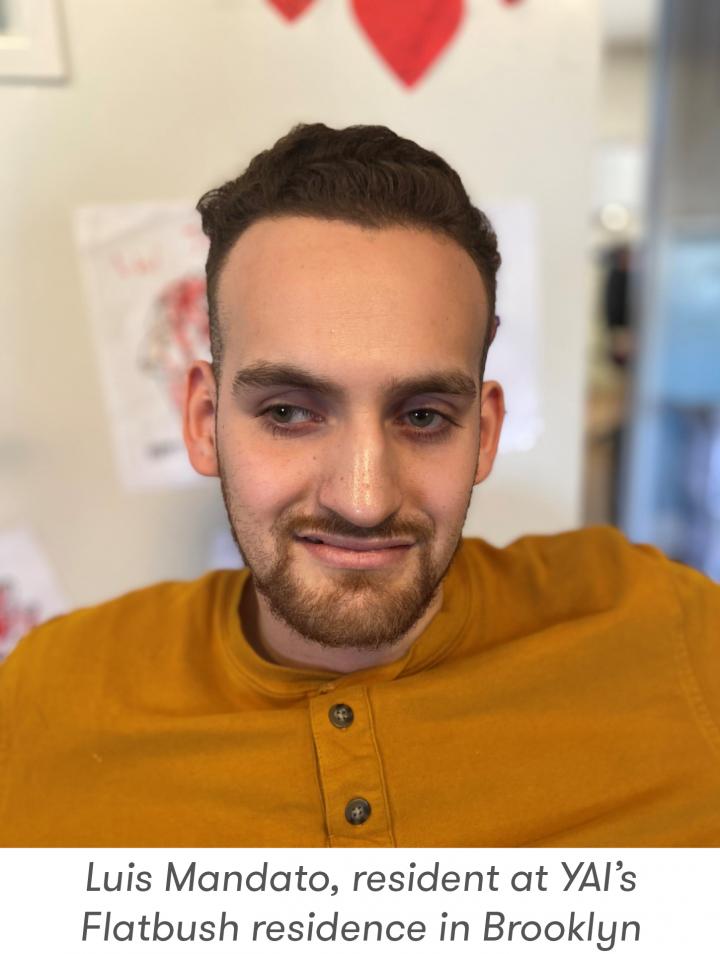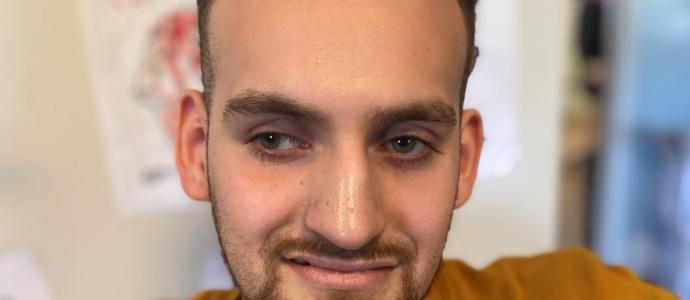Share
 “I don’t speak with words, and my friends don’t sign, but they will stand by me and make contact, we gesture to make ourselves clear,” said Luis Mandato, resident at YAI’s Flatbush residence in Brooklyn and a former graduate of the American School for the Deaf (ASD).
“I don’t speak with words, and my friends don’t sign, but they will stand by me and make contact, we gesture to make ourselves clear,” said Luis Mandato, resident at YAI’s Flatbush residence in Brooklyn and a former graduate of the American School for the Deaf (ASD).
Mandato and his fellow deaf residents find ways to communicate effectively with others, whether using traditional American Sign Language or other visual methods. Because signing is such a personal experience, each person adopts bits of slang that may not be taught in a basic ASL training. In Brooklyn, the Flatbush residences have housed two graduates of ASD for more than a year, and staff have had the responsibility to not only learn how deaf resident Luis Mandato communicates, but to ensure that he is able to communicate effectively with the people around him.
“Even the staff, they’re still learning but have learned the words (signs) that are important for me,” Mandato said.
When students from ASD or similar schools need to be housed, it must be in residences where staff are well-versed in communicating non-verbally. According to a 2019 study published in the Journal of Autism and Developmental Disorders, deaf students with I/DD have a tougher time communicating and socializing. YAI staff utilize ASL and various forms of visual technology to make sure that ASD graduates become a part of their residential community.
Communication is something deaf residents have had to navigate for much of their lives, but it’s the support from staff members that can make their housing feel like home. “Being deaf is a huge part of their identity, and it’s about maintaining and embracing that part of their life,” said Leanne McQueen, Residential Coordinator for Brooklyn.
In the Bronx, Jamel Roberts, a 2020 ASD graduate, has used games, cards, and other visual aids to communicate with his fellow residents. Others come to understand his way of communicating, the emotion, and how to ultimately read it, said Violeta Mendoza, Residential Services Supervisor in the Bronx.
“He uses a lot of facial expressions, and we end up acting lots of things out,” Mendoza explained. “Every week we learn new sign language based on the things he wants to do, but we have also learned the different kinds of sign that apply to him – slang and proper sign. The fact that he is willing to work with us and teach us how he communicates, it shows us just how comfortable trusting us he truly is.”
As with others living in YAI residences, community is key. Since 2018, YAI began taking in recent ASD graduates, with four currently living in YAI residences and four others currently in process.
"Sometimes it’s harder to place students from certain schools such as ASD in residences because of language requirements,” explained Xiao Mei Gao, Intake Supervisor at YAI. “We provide them with a sense of community and welcome them to a new home setting, because many of them can otherwise be subject to violence and neglect.”
To Toni Martinez, Director of Intake and Special Projects, YAI’s connections with feeder schools allow staff to receive needed training and provide seamless and comfortable transitions for potential residents.
“We are constantly working with OPWDD to problem-solve and help place as many students into the housing that works best for them. We learn so much about the temperament, personality, just who they are as people from the schools which makes it easier to integrate them into our existing communities,” Martinez said. “When people are managing their physical and mental health and can communicate, they are able to thrive. When we can work with them, their quality of life increases.”

